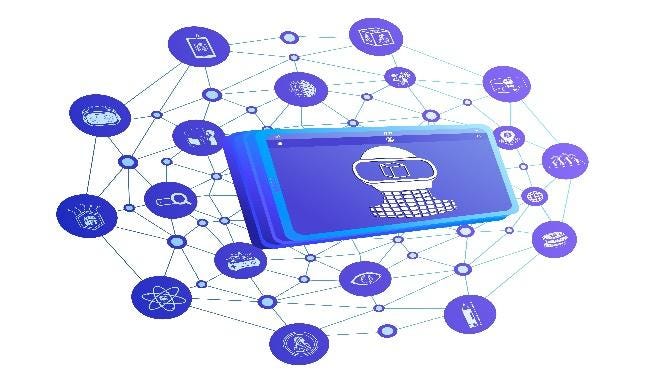The New World Order of Cryptocurrencies and Decentralized Finance: Redefining Money and Power
The New World Order of Cryptocurrencies and Decentralized Finance: Redefining Money and Power
Did you invest in cryptocurrencies? Bitcoin? Ethereum? Something else? It must’ve been a rollercoaster ride. Prices shooting to the sky and then falling rock bottom. Cryptocurrencies have been a highly whimsical asset class.
But before you bought some, did you stop to think what they even are? Have you wondered how cryptos came to be? Why someone took the time to think up such a concept? And why do they even have value?

Bitcoin was born in the aftermath of the 2007–08 financial crisis. The world was grappling with an economic collapse. People were losing their houses and investments and their livelihoods. Governments were reeling under the shock of the event and thousands of experts were making thousands of opinions about what had to be done.
That’s when an unknown person or a group of people going by the pseudonym Satoshi Nakomoto developed the concept of bitcoin as a solution to the factors that led to the crisis — centralised finance and endless money creation. This then opened the door to a totally decentralised system of finance that would secure the world from such kinds of crises.
So here are a bunch of things that’ll help you to understand what cryptocurrency is and why a decentralised financial system is the direction the future will take.
Centralised finance, banks and fiat money

Today’s money is fiat money. Meaning, it’s not backed by a precious commodity. The value that a dollar note holds is based on the trust that you place in the government. If the government or the central bank of your nation decides to devalue it, it can simply do so.
The central bank can also choose to print as much money as it wants. The central bank has great control over the amount of money in an economy and it tries to manipulate its value every day.
Banks come next in line. They create money by making loans. The fractional reserve mechanism and the trust-based nature of money make it possible for banks to make loans in a flash of an eye!
The entire financial system works based on the trust that people have in the central authority. And this makes the system vulnerable to erroneous gauging and decision-making, manipulation, and corruption.
In fact, you could even say that the 2007–08 crisis was a result of a series of wrong decisions due to a myriad of reasons from the lack of adequate information to the plain lack of certainty in the system. This is where cryptocurrencies come in.
Cryptocurrencies can’t be tossed around

With cryptocurrencies, the whole idea that money can be created and regulated by a central authority is out of the window.
Cryptos are basically computer programs that can be used to buy goods. Instead of giving someone a dollar note you send them a computer program.
But this is how cryptos are different. They run on blockchains. On a blockchain, no one can create new money. Money creation is done in a stable and scientific manner by the technology itself.
Therefore the need for a central authority is eliminated.
When you pay someone some bitcoin, the transaction gets recorded on every single computer that is connected to the blockchain.
If a miscreant was to hack into an account and steal some bitcoin, he’d be easily spotted because all the other computers on the blockchain will sound the alarm.
With fiat money, we know that money needn’t have intrinsic value. It needn’t be backed by a commodity. Cryptos make use of this idea. Cryptos aren’t backed by anything. Interestingly they aren’t even backed by trust in a central authority.
So how do they get their value? They get their value because of the forces of demand and supply. Anything that’s limited in quantity will become costlier. This is why the first cryptocurrency — bitcoin is limited in supply. Only 21 million units.
Hence, when a lot of people are after the few bitcoins that are available its price increases. Moreover, when transactions happen on a blockchain new bitcoins are created and rewarded to the owners of the computers that executed the very complicated algorithm required to complete the transaction.
However, other cryptos like Ethereum aren’t limited in quantity. Nevertheless, the fact that money creation is done through a rational mathematical algorithm ensures that there’s no need for a central authority.
DeFi

The additional feature of cryptos — they’re peer-to-peer. This means you don’t need a bank! If you want to send some bitcoin to someone in another part of the world, you needn’t go through a middleman like PayPal or a bank. You simply need to send it directly to the recipient’s account on the blockchain!
Think about this. The whole purpose of a bank is to connect borrowers and lenders. They then take a cut from the profits of lending. Now if a borrower could take money directly from a lender there is no need to pay any charges to the middleman — banks.
And when banks are no longer making loans, there’s no reckless money creation. The money flows directly from one person to another. The technology takes care of the transaction and in the process money is created and given to the computer performing the transaction.
There are more benefits to this. Assume you want to send money from one country say the US to another country, India. You need to go to the bank. Your bank will transfer the cash to a bank in India which has to convert dollars into rupees. This entire takes place in several steps with banks taking a cut at every step.
However, with DeFi, the money can go directly to another person in any other part of the world.
DeFi has the potential to completely replace the current centralised system of finance. Blockchain and DeFi have ushered in a whole new class of investment options like NFTs!
DeFi is a fast-growing concept and has opened up avenues for great progress and possibilities. Hopefully, with DeFi the world will see lesser uncertainty and corruption in the financial system.